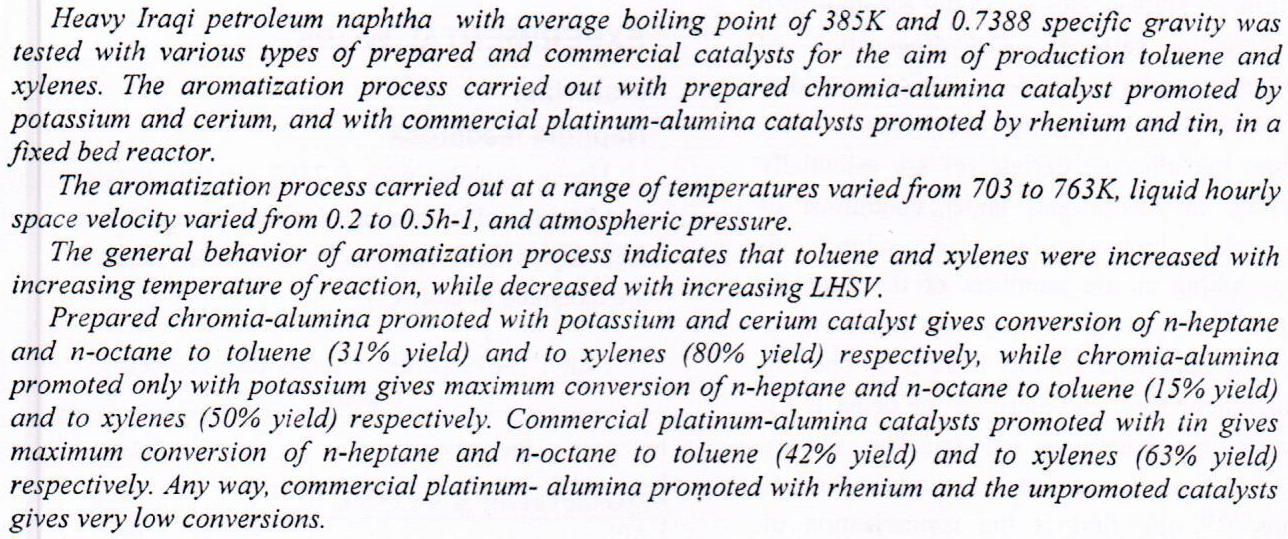
This research aims to develop transdermal patches of Ondansetron hydrochloride (OSH) with different types of polymers, ethyl cellulose and, polyvinyl pyrrolidone k30 in a ratio (3:0.5,3:1,3:2,2:1,1:1) with propylene glycol 20%w/w as a plasticizer. Prepared transdermal patches were evaluated for physical properties. The compatibility between the drug and excipients was studied by Differential scanning calorimetry (DSC), where there is no interaction between the drug and polymers. From the statistical study, there is a statistical difference between all the prepared formulations p<0.05. In-vitro Release study of transdermal patches was performed by using a paddle over the disc. The release profile of OSH follow
... Show More (1)
(1)
 (1)
(1)
The primary objective of current study was to evaluate the effects of different anastrozole dosages on the physiological performance, hematological profile, and serum biochemical parameters of broiler roosters. A total of Twenty-six Lohmann Brown roosters were randomly assigned to four treatment groups. The first group (T1) served as the control and received no anastrozole, while the other groups (T2, T3, and T4) were administered 0.2 mg, 0.4 mg, and 0.6 mg of anastrozole per day, respectively. The first and second groups consisted of six birds each, while the third and fourth groups had seven. The results demonstrated a significant improvement (P ≤ 0.05) in several physiological and biochemical parameters in the group receiving 0.6 mg of
... Show MoreAbstract A total of 207 specimens were collected from different sources including patients, health care staff and hospital environment in Ibb city, Yemen. The study used the bacteriocin produced from active producer strains in typing of Staphylococcus aureus. Depending on the morphological, cultural and biochemical characteristics, 54 (26.09%) isolates of Staphylococcus aureus were identified. An antibiotic sensitivity test was done for the bacterial isolates, and the results showed that there were multiple resistant antibiotics. The Staphylococcin production of these isolates has been detected by using wells assay. Fifty one isolates were Staphylococcin producer. Four isolates (staph19, staph25, staph28 and staph43) were chosen as go
... Show More (2)
(2)
Dielectric barrier discharges (DBD) can be described as the presence of contact with the discharge of one or more insulating layers located between two cylindrical or flat electrodes connected to an AC/pulse dc power supply. In this work, the properties of the plasma generated by dielectric barrier discharge (DBD) system without and with a glass insulator were studied. The plasma was generated at a constant voltage of 4 kV and fixed distance between the electrodes of 5 mm, and with a variable flow rate of argon gas (0.5, 1, 1.5, 2 and 2.5) L/min. The emission spectra of the DBD plasmas at different flow rates of argon gas have been recorded. Boltzmann plot method was used to calculate the plasma electron temperature (Te), and Stark broadeni
... Show MoreBreast cancer (BC) is the most commonly diagnosed cancer in women. The metabolism of iron is closely regulated by hepcidin which exerts its action by interacting with a ferroportin.
The aim of the present study was to assess the alterations in the levels of some serum biomarkers that have a role in iron homeostasis (hepcidin and ferroportin) in addition to hematological parameters (hemoglobin, leukocyte and platelets count) in different stages of BC.
This study included 66 women with BC. The patients were categorized as follows : group 1 includes :22 patients with stage I disease ,group 2 includes: 22 patients with stage II disease ,and group 3 include: 22 patients with stage III disease .Group 4 includes :22 appare
... Show More (4)
(4)
 (2)
(2)
Nitrogen (N) is a key growth and yield-limiting factor in cultivated rice areas. This study has been conducted to evaluate the effects of different conditions of N application on rice yield and yield components (Shiroudi cultivar) in Babol (Mazandaran, Iran) during the 2015- 2016 season. A factorial experiment executed of a Randomized Complete Block Design (RCBD) used in three iterations. In the first factor, treatments were four N amounts (including 50, 90, 130, and 170 kg N ha-1), while in the second factor, the treatments consisted of four different fertilizer splitting methods, including T1:70 % at the basal stage + 30 % at the maximum tillering stage, T2:1/3 at the basal stage + 1/3 at the maximum ti
... Show More (1)
(1)
 (3)
(3)
Background: Glass ionomers have good biocompatibility and the ability to adhere to both enamel and dentin. However, they have certain demerits, mainly low tensile and compressive strengths. Therefore, this study was done to assess consistency and compressive strength of glass ionomer reinforced by different amount of hydroxyapatite. Materials and Methods: In this study hydroxyapatite materials were added to glass ionomer cement at different ratios, 10%, 15%, 20%, 25% and 30% (by weight). The standard consistency test described in America dental association (ADA) specification No. 8 was used, so that all new base materials could be conveniently mixed and the results would be of comparable value and the compressive strength test described by
... Show MoreThe study was conducted to show the effect of using dried rumen powder as a source of animal protein in the diets of common carp (Cyprinus carpio L.) on its performance, in the fish laboratory/College of Agricultural Engineering Sciences/University of Baghdad/ for a period of 70 d, 70 fingerlings were used with an average starting weight of 30±3 g, with a live mass rate of 202±2 g, randomly distributed among five treatments, two replicates for each treatment and seven fish for each replicate. Five diets of almost identical protein content and different percentages of addition of dried rumen powder were added. 25% was added to treatment T2 and 50% to treatment T3 and 75% of the treatment T4 and 100% of the treatment T5
... Show More